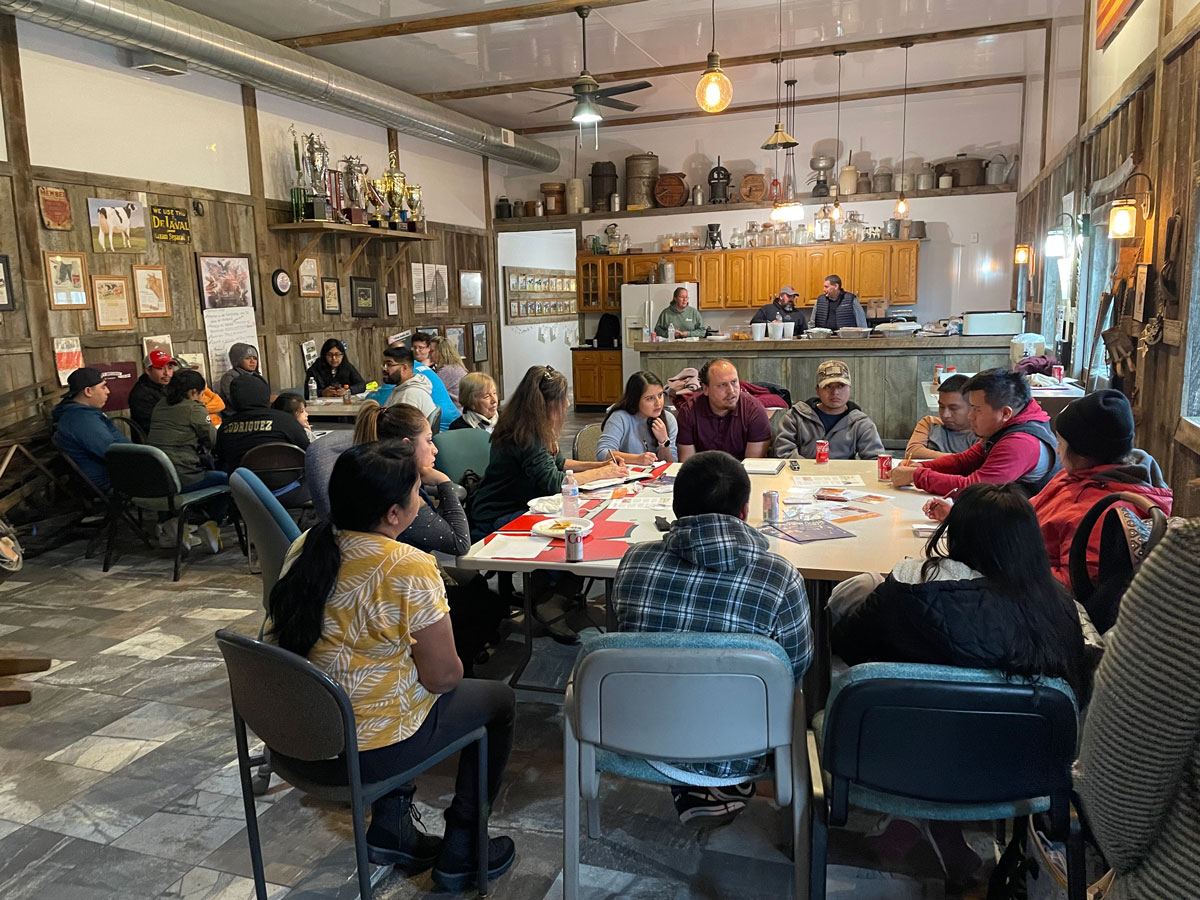Addressing rural Wisconsin’s workforce challenges
Several WEDC partners are implementing grant projects related to housing, training, forestry careers and other issues affecting the state’s rural communities.
The Workforce Innovation Grant (WIG) Program, with grant rounds announced in January and June 2022, aims to help communities throughout Wisconsin solve their most pressing workforce challenges by financially supporting collaborative, sustainable and innovative plans developed by regional organizations. The program encourages the development and implementation of leading-edge, long-term solutions that enable businesses to more easily find workers and empower those workers to more successfully prepare for and connect with family-supporting jobs.
Workforce Innovation Grants totaling nearly $130 million were awarded to 27 regional projects. Sixteen projects covering more than 50 rural counties will receive more than $90.6 million to address barriers to entry, career pathways, transportation, education, child care, health care and housing challenges.
Innovative projects that impact rural Wisconsin include up to $8 million for the Wisconsin Forestry Center. In seven of Wisconsin’s Northwoods counties, the forestry industry faces a severe workforce challenge due to an aging workforce that is at or nearing retirement or lacks experience in modern forestry practices. Another 25% are expected to exit the industry within five years. Meanwhile, “brain drain” is impacting the workforce from the other end of the age range, as younger workers move away from their local communities for other educational or professional opportunities due to not having been exposed to the family-supporting career opportunities the forestry industry provides.
In a program spearheaded by UW-Stevens Point and eight partners, future workers will be introduced to the advanced technologies that are considered the future of the forestry industry. Modeled after a successful initiative in Butte, Montana, which has graduated 300 new employees since it started in 2019, this program’s multifaceted approach first focuses on building awareness by exposing young people to forestry career opportunities at both public and Menominee Nation K-12 programs. It further develops career skills, combining a hands-on certificate-bearing high-school curriculum with a skills camp taught by trained teachers and industry professionals. Finally, to address the skills gap in the existing workforce, the program includes immersion training designed to immediately address workforce challenges through six-week forestry operations and five-week mill technology certificates to upskill and reskill participants so they can advance their career and income in the forestry industry.
The Wisconsin Heights School District and its three partner school districts will utilize just over $260,000 to tackle the extraordinary teacher shortage faced by rural districts. The GROW school districts plan to “grow their own” teachers. The program will identify high school students interested in teaching and support their education through college. In high school, participating students will be mentored by classroom teachers at the grade level or subject area they are interested in teaching, while taking up to 12 credits through UW-Whitewater. Participating students who continue on to college with the intention to pursue a career in education will also be eligible for scholarships to help defray college costs. In return, the students must agree to be interviewed by one of the GROW districts and, if hired, commit to teaching for at least three years in a GROW district. Each of the three school districts involved will have at least one candidate participating in the program each cycle.
Northwood Technical College, in collaboration with Impact Seven, is planning a two-pronged approach to help overcome the worker shortage in Ashland, Barron, Bayfield, Burnett, Douglas, Iron, Polk, Rusk, St. Croix, Sawyer and Washburn counties. To help prepare workers with the skills employers need, the college will allocate up to $4 million to advanced manufacturing equipment and fund non-campus and campus training locations. This will provide training to unemployed/underemployed adults (including underserved populations) who lack skills to enter medium- and high-skilled jobs in the advanced manufacturing industry, with a goal of increasing their average pay. For its part, Impact Seven will establish a housing fund of up to $6 million to increase the availability of affordable workforce housing and reduce risk on multifamily rental housing projects. Through workforce accelerators, the project will provide on-site training, with classroom spaces the community’s workers can easily access from their affordable housing locations.
The Office of Rural Prosperity (ORP) is excited to support the work of these and other WIG projects that benefit rural Wisconsin. Follow along on updates from these projects, as well as other ideas, stories and resources impacting rural Wisconsin by subscribing to the ORP newsletter.






